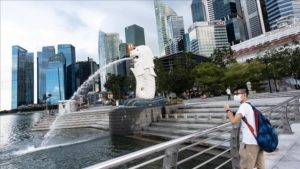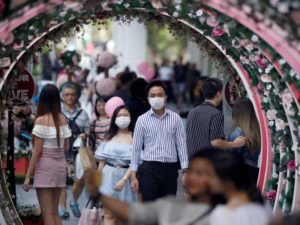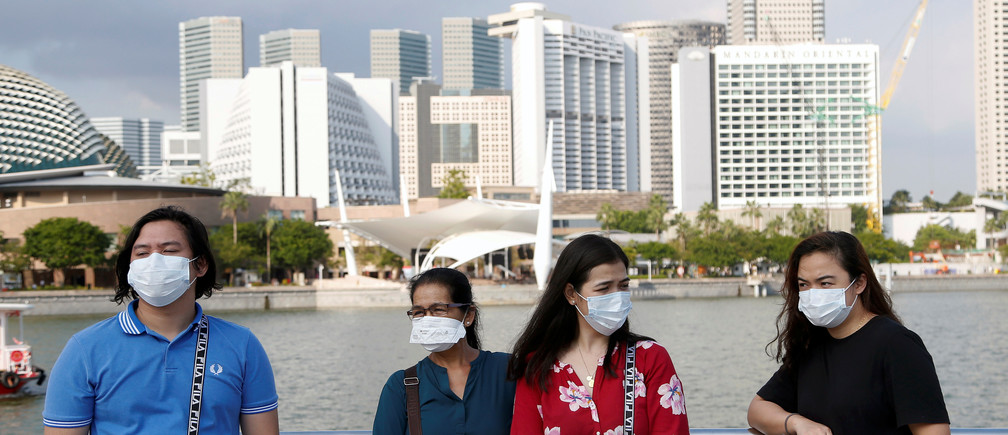Research & Studies


In my book titled “Singapore Globally Entangled” to be published later this year, I outlined the deciding factors behind the success of modernization in one of the world’s most globalized countries. Sitting quarantined at home I wondered, how Singapore’s highly qualified public administration has been handling the COVID-19 challenge.
SARS in 2003 taught Singapore important lessons in planning a national response. SARS infected 238 people, but resulted in 33 deaths. As of April15, 2020, when the number of confirmed COVID-19 cases reached 3,252, 10 patients passed away since the outbreak. The mortality rate is among the lowest in the world, 0.3 % of all confirmed cases in 3 months.
Singapore’s almost 6 million inhabitants live on a densely populated area slightly bigger than the Hungarian capital, Budapest. 75 % of the country’s citizens are ethnic Chinese and many workers also come from Mainland China. The first confirmed coronavirus case, a Chinese male from Wuhan was identified on 23rd January 2020 and the next 20 cases were Chinese arrivals from Wuhan, as well.
How could the spread of the epidemic be contained in such an environment, keeping the number of confirmed cases at 86 and no deaths in the first month? Why did the outbreak then accelerate starting in mid-March?
 A core element in Singapore’s preparation to prevent and manage an epidemic is the special priority the development of the healthcare system enjoys. Life science, biomedical and biotechnology research has been created almost from scratch with substantial public funding since 2003. The 2019 IMD and the World Economic Forum Global Competitiveness Rankings placed Singapore among the leading countries in terms of its healthcare system and the quality of her institutions.
A core element in Singapore’s preparation to prevent and manage an epidemic is the special priority the development of the healthcare system enjoys. Life science, biomedical and biotechnology research has been created almost from scratch with substantial public funding since 2003. The 2019 IMD and the World Economic Forum Global Competitiveness Rankings placed Singapore among the leading countries in terms of its healthcare system and the quality of her institutions.
 The institutional response to the COVID-19 epidemic can be traced in chronological order through several hundreds of press releases and measures of the relevant government websites.
The institutional response to the COVID-19 epidemic can be traced in chronological order through several hundreds of press releases and measures of the relevant government websites.
1) An outstanding feature was the incredibly fast reaction to the emergence of the epidemic in China. On the 2nd of January, as soon as the first news about the strange new disease became public, temperature screening was introduced for incoming travellers from Wuhan, and soon for all arriving flights from China. Suspicious cases were immediately transferred to special care units in hospitals. On 21st January specific protocols were introduced to handle COVID-19 cases. Gowns, and other PPE were issued to all hospitals and general practitioners. A multi-ministerial task force was formed before even the first confirmed case was identified. At the end of January 5 million surgical masks were distributed among households.
2.) A major element in fighting COVID 19 has been the flow of continuous and transparent information. Numbered from the first case to the 3,252th on the official websites, while the anonymity of the patients is kept, one is able to follow, whether a new case was brought in by travellers, or was spread locally. Prime Minister Lee Hsien Loong said in an interview: “We put great efforts to communicate clearly what and why we are doing. There is no good measure that can be implemented without trust”.
3.) A key role is attributed to the extremely well-organized, very rapid contact tracing process with steadily increasing resources. Potentially infected persons were quarantined and controlled based on a strict protocol. According to Ministry of Health data, 40 % of cases registered before mid-March were reached through contact tracing before symptoms appeared or the patient turned to a doctor.
4.) The importance of personal hygiene and social distancing has been emphasized from the beginning. Household and public institutions were supplied with related protocols and disinfectants. Schools and workplaces were not closed until April. Safe distancing measures at workplaces were formulated by the Triparty Labour Council, incorporating government, employers’ and employees’ representatives. Regulations had been incrementally tightened –church services have not been held since 26th March and theatres, movies, night clubs were closed. One day home based learning per week was introduced in elementary and secondary schools from 29th March, allowing the Ministry of Education to test and fine-tune remote learning systems.
5.) Border controls were tightened from 11th March when WHO declared COVID-19 a global pandemic. Returning Singaporean citizens and permanent residents from neighbouring ASEAN, Europe and USA contributed to a spike in imported cases. The move to ban all short-term visitors entering or transiting the city state from 24th March included tightened travel restrictions on work pass holders and were aimed at curbing imported infections. Work pass holders and their dependents may enter only with preliminary health certificate, and permission from the Ministry of Labour that they work in essential sectors.
7th April – Move to the temporary lockdown – the “Circuit Breaker”

Prime Minister Lee addressed Singaporeans on television on three occasions only since the outbreak. On 3rd April he spoke of identifying large local clusters in the preceding week in foreign workers dormitories and nursing homes. New cases were attributed solely to the local spread of the disease and the source of half of the cases could not be identified. In spite of ramping up contract tracing teams, the outbreak has shaken off the leash. The government responded with a package of complex tightening measures introduced in the first instance for a one month period. Non-essential workplaces closed down – and moved to off-site work, where possible. Production sites integrated into main global production networks remained open. Nurseries, schools, institutions of higher education moved to full home-based learning. Beaches are closed and strict fines have been introduced for inhabitants meeting other than those in their household or for not wearing masks when outside of home. With a sudden spike in 15th-19th April the number of cases doubled to 6,588 – the highest number on 19th April in Southeast Asia, and the total number of fatalities stood at 11. More than 90 % of the 3,300 new cases were work permit holders residing in privately run foreign worker dormitories, and had been reached by excessive testing. Further 20,000 foreign (mainly South-Asian) construction workers have been quarantined supplied by meals and secure salary by the government to contain the spread outside the dormitories.
Certain further steps of the Singaporean government, thinking well ahead, suggests an extended battle against the virus. Terminal 2 at Changi Airport will be closed for 18 months and new legislation is being prepared to allow voting of electors in quarantine in the parliamentary elections due within a year. The Prime Minister believes that in the end the solution will only come in the form of an efficient treatment or a vaccine. In the meanwhile, the high-level healthcare system and public administration tries to keep pace with the situation, by transparent communication and employing both sticks and carrots to enforce the measures.
Researcher, Institute of Advanced Studies